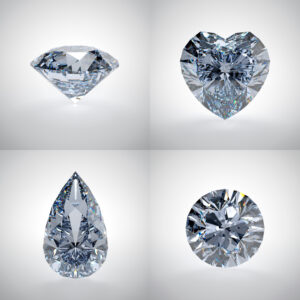
Diamonds grown above the ground are purer than “dirt diamonds” blown out of the ground with dynamite and gasoline. Diamonds that are grown in the lab contain fewer flaws and less stress in the crystal structure than diamonds grown in the chaos beneath the Earth. Simply put, the finer, brighter, and whiter the diamond, the better, brighter, and whiter the gemstone.
For a few years, the popularity of lab-grown diamonds has taken a dip. However, recent surveys are showing that it is slowly regaining its popularity among people these days.
Let’s take a look at the benefits of buying lab-grown diamond earrings, rings, necklaces, etc.
Affordability
Lab-grown colored diamonds are available for a fraction of the cost of natural colored diamonds, which sell for inflated rates due to their aesthetic appeal. What’s more, lab-grown colored diamonds are shinier and more perfect than natural colored stones: they’re pure, consistent in hue, and easily accessible.
Better Quality
Lab-grown diamonds are purer than real diamonds because they do not have any impurities or imperfections embedded in them. Since they are manufactured under highly regulated conditions, they have fewer flaws and show less evidence of stress in their crystal structure. The diamond will be brighter, clearer, and whiter as its purity improves. Indeed, a considerable percentage of lab-grown diamonds have greater purity ratings than naturally occurring diamonds.
Environmental Benefits
Diamond mines are among the world’s largest excavations, needing massive amounts of fossil fuels to remove the diamonds with heavy machinery. While lab diamonds are environmental-friendly, mined diamonds are not, resulting in long-term damage to ecosystems. Moreover, diamond mining is becoming less and less sustainable each year, whereas diamond cultivation is becoming more so. Many diamond producers are already employing sustainable energy to create diamonds, and several diamond-producing facilities are being built in places where renewable energy is abundant.
You Could Know The Origin Of The Diamond
The majority of diamond collectors desire to be informed about their stone’s origins and

subsequent acquisition. Unfortunately, because most naturally mined diamonds come from troubled areas, their origins might be hazy. These stones, known as ‘blood diamonds,’ have a dark background and may have been sold to fuel military wars or civil unrest. Even diamonds obtained outside of conflict zones may have a history of child labor, human rights violations, or terrible working conditions. Synthetic diamonds, on the other hand, have a spotless track record and a confirmed, traceable source.